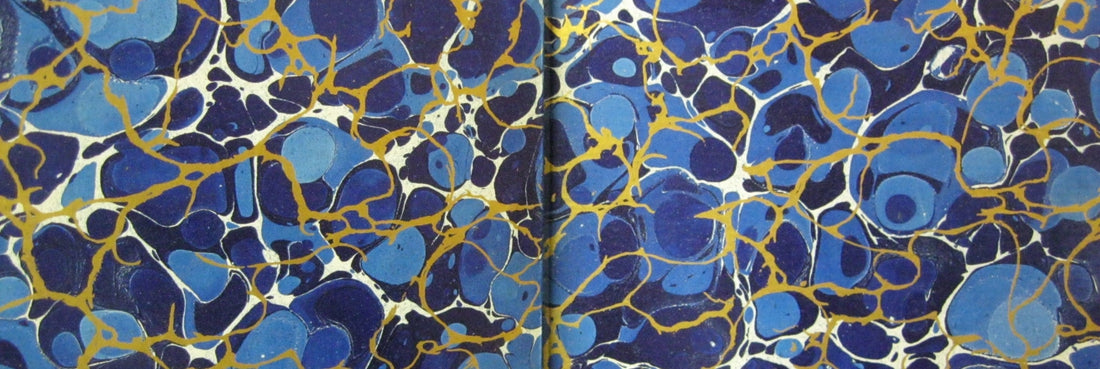Originally posted February 2018, presented here with minimal editing. The majority of the books pictured have long since sold, but we certainly still do have a bunch of books with beautiful endpapers currently available.
Endpapers–those pages at the front and back of the a book that connect the cover boards with the text block–present a tempting canvas for a designer. The possibilities are endless. I think they're having a resurgence at the moment, but proper endpaper design probably peaked in the 19th century. The technique of “marbling” is in itself an endlessly variable art, and the craft in its traditional form would be much too expensive for publishers today. Marbling is also often used for covers and page edges. See for yourself:
And more recently, Rajiv Surendra provides a charming overview on how to get started in the craft:
Insane, right?
The photos in the gallery below are, with only a couple exceptions, from a single private collection (a single bookcase, even), and they range from the mid-18th century to the early 20th. One of the books was printed in the mid-17th century, but the endpapers are of a much later binding (the green and pink floral). It is likely that many of these endpapers are from books that have been bound specially or rebound for preservation. Not all of them are marbled, but all of these are abstract – maps and illustrations of course can also be used to great effect and became more popular in the late 19th century. Endpapers are also where you’ll find bookplates (note the one for Dowager Lady Audley). Bookplates, or ex libris, are worthy of their own post. Suffice it to say that endpapers can be super exciting! Blank endpapers are always a let down, but they do present a nice place for signatures, gift inscriptions, grocery lists, and so forth.
Besides that these books are generally in such great condition, really old, and just plain awesome, one of the first things I noticed was that so many had such gorgeous endpapers. Take a look for yourself, and enjoy :)

